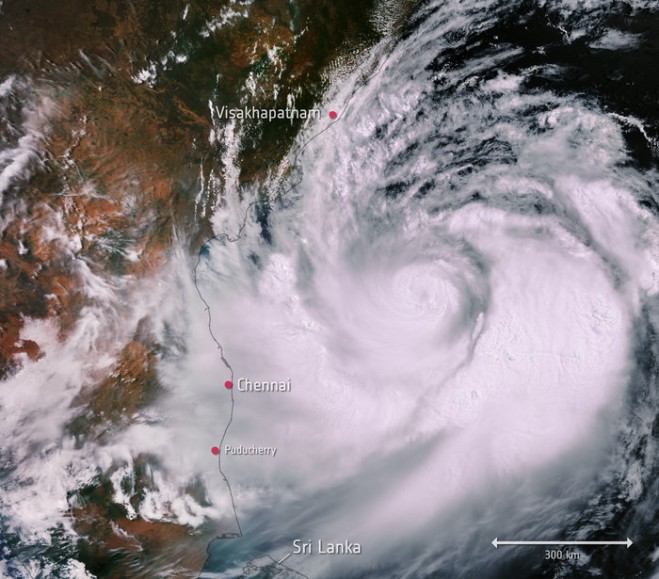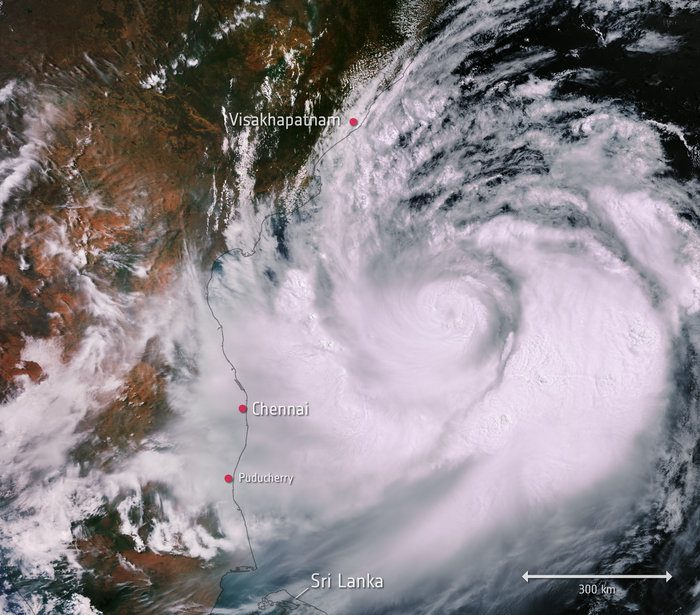

This Copernicus Sentinel-3 image captured on May 1, 2019, shows Cyclone Fani. Brewed in the Bay of Bengal and heading westwards, the cyclone was expected to make landfall on India’s east coast on May 3.
With wind speeds of up to 200 kilometers per hour, heavy rainfall and flooding have been forecast along the Odisha coast, and has led to the evacuation of around 800,000 people from the nearby low-lying areas.
In the image, the width of the storm is estimated to be around 700-800 kilometers. Once Cyclone Fani makes landfall, it is expected to move northeast, hitting Bangladesh and Bhutan on May 4.
Image credit: Contains modified Copernicus Sentinel data (2019), processed by ESA